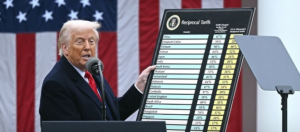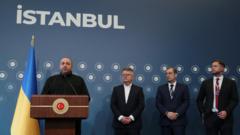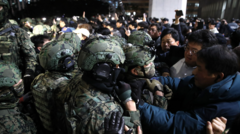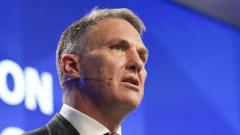On April 9, 2025, President Trump’s new tariff strategy takes effect, instituting a blanket 10% tariff on all imports, with significant hikes on Chinese and other foreign goods. Critics warn of economic backlash, while Trump insists the measures are vital to restore U.S. manufacturing and trade equity.
Tariff Tensions: Trump’s Trade Policy Ignites Global Economic Unrest

Tariff Tensions: Trump’s Trade Policy Ignites Global Economic Unrest
The implementation of a comprehensive tariff strategy under Trump raises tensions and sets the stage for a global trade conflict.
President Donald Trump’s bold new tariff initiative launched on April 9, 2025, embodies a significant shift in America’s approach to international trade. Coined “Liberation Day” by his administration, this policy enforces a universal 10% tariff on every imported good, alongside increased “reciprocal” tariffs targeting nations that impose high barriers against U.S. exports.
The most aggressive adjustments are directed at China, where a staggering total tariff of 54% is now applied. This figure comprises a new 34% reciprocal duty layered on top of an existing 20% levy. Secretary of the Treasury Scott Bessent emphasized that this decision targets China's ongoing trade barriers and focus on intellectual property infringement.
Countries facing substantial tariff increases include:
- European Union: 20%
- Japan: 24%
- South Korea: 25%
- Vietnam: 46%
- Taiwan: 32%
The initial blanket tariff commenced on April 5, culminating in the implementation of country-specific tariffs shortly thereafter. Trump has championed this sweeping action as a crucial means of safeguarding American industries and rectifying what he identifies as decades of skewed trade agreements. “We’re not igniting a trade war,” Trump stated. “We’re concluding the one being fought against us for years."
Skeptics express concern that these tariffs might escalate consumer prices in the U.S. and incite retaliatory measures from other nations. This anticipation was validated when China responded with its own countermeasures, which include raised tariffs on American products and limitations on rare earth mineral exports essential for U.S. manufacturing and defense.
The stock market has reacted with unpredictability as investors consider the implications of this potential trade standoff. Many analysts observe that Trump’s actions could significantly alter the global economic landscape if other nations adopt similar measures.
Despite the criticism surrounding the tariff plan, the Trump administration remains steadfast in its commitment, viewing these tariffs as the opening phase of a larger initiative aimed at rejuvenating American manufacturing, penalizing unfair trading partners, and re-establishing U.S. economic supremacy on the global stage.





















